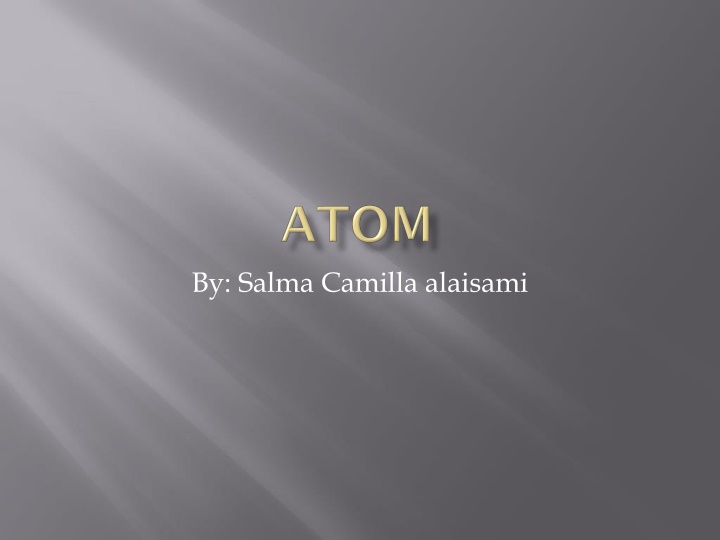
Discovering Subatomic Particles: Thomson's Breakthrough in 1897
In 1897, physicist J.J. Thomson revolutionized the understanding of atoms by proving the existence of subatomic particles, particularly electrons, through his experiments with cathode rays. This discovery laid the foundation for modern atomic theory, emphasizing the fundamental nature of electrons in all atoms and the concept of fixed whole-number ratios in chemical combinations. Thomson's work significantly influenced the fields of physics and chemistry, challenging Dalton's Atomic Theory and expanding scientific knowledge about the building blocks of matter.
Download Presentation

Please find below an Image/Link to download the presentation.
The content on the website is provided AS IS for your information and personal use only. It may not be sold, licensed, or shared on other websites without obtaining consent from the author. If you encounter any issues during the download, it is possible that the publisher has removed the file from their server.
You are allowed to download the files provided on this website for personal or commercial use, subject to the condition that they are used lawfully. All files are the property of their respective owners.
The content on the website is provided AS IS for your information and personal use only. It may not be sold, licensed, or shared on other websites without obtaining consent from the author.
E N D
Presentation Transcript
In 1897, the British physicist J. J. Thomson (18561940) proved that atoms were not the most basic form of matter . He demonstrated that cathode rays could be deflected, or bent, by magnetic or electric fields, which indicated that cathode rays consist of charged particles (Figure 2.2.22.2.2). More important, by measuring the extent of the deflection of the cathode rays in magnetic or electric fields of various strengths, Thomson was able to calculate the mass-to-charge ratio of the particles. These particles were emitted by the negatively charged cathode and repelled by the negative terminal of an electric field. Because like charges repel each other and opposite charges attract, Thomson concluded that the particles had a net negative charge; these particles are now called electrons. Most relevant to the field of chemistry , Thomson found that the mass-to-charge ratio of cathode rays is independent of the nature of the metal electrodes or the gas, which suggested that electrons were fundamental components of all atoms.
All atoms of a specific element are identical in mass, size, and other properties. However, atoms of different element exhibit different propertieAll matter is made up of tiny, indivisible particles called atoms. s and vary in mass and size. Atoms can neither be created nor destroyed. Furthermore, atoms cannot be divided into smaller particles. Atoms of different elements can combine with each other in fixed whole-number ratios in order to form compounds. Atoms can be rearranged, combined, or separated in chemical reactions. Limitations of Dalton s Atomic Theory
